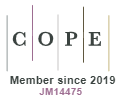„Wędrowiec” Hieronima Boscha jako archetypiczny obraz „obcego-innego”
DOI:
https://doi.org/10.18778/1733-8069.16.2.04Słowa kluczowe:
wzorzec „obcego-innego”, „Wędrowiec” Hieronima Boscha, obrazy migrantówAbstrakt
Jednym z najważniejszych współczesnych doświadczeń społeczeństw europejskich jest niewątpliwie kryzys migracyjny. Wywołane przez niego społeczne obawy wobec przybyszów pokazują, jak ważny jest wciąż archetypowy wzór „obcego-innego” i że może on być traktowany jako przykład „stałej antropologicznej”. Celem artykułu jest próba spojrzenia na obraz „Wędrowiec” Hieronima Boscha jak na ilustrację archetypowego wzoru „obcego-innego”. Wydaje się, że takie odczytanie tego dzieła, bardzo bogatego w treści symboliczne, z jednej strony doskonale uzasadnia tezę o archetypowych źródłach współczesnych postaw wobec „obcych”, z drugiej natomiast strony pozwala lepiej zrozumieć i wyjaśnić współczesne reakcje i zachowania Europejczyków. Staje się to szczególnie widoczne, gdy zestawimy obraz Hieronima Boscha ze współczesnymi medialnymi obrazami migrantów.
Pobrania
Bibliografia
Barański, Janusz. 2010. Etnologia i okolice. Eseje antyperyferyjne. Cracow: Wydawnictwo Uniwersytetu Jagiellońskiego.
Google Scholar
Bauman, Zygmunt. 1991. Modernity and Ambivalence. Oxford: Blackwell Publishers.
Google Scholar
Bauman, Zygmunt. 1998. Globalization. The Human Consequences. Oxford: Blackwell Publishers.
Google Scholar
Bax, Dirk. 1979. Hieronymus Bosch. His Picture-Writing Deciphered. Rotterdam: A.A.Balkema.
Google Scholar
Białostocki, Jan, (ed.). 1988. Myśliciele, kronikarze i artyści o sztuce. Od Starożytności do 1500. Warsaw: Państwowe Wydawnictwo Naukowe.
Google Scholar
Boczkowska, Anna. 1977. Hieronim Bosch. Astrologiczna symbolika jego dzieł. Wroclaw, Warsaw, Cracow, Lodz, Gdansk: Wydawnictwo Ossolineum.
Google Scholar
Bokszański, Zbigniew. 2001. Stereotypy a kultura. Wroclaw: Wydawnictwo FUNNA.
Google Scholar
Bokszański, Zbigniew. 2008. Tożsamości zbiorowe. Warsaw: Państwowe Wydawnictwo Naukowe.
Google Scholar
Buzzati, Dino and Mia Cinotti. 1977. L’opera completa di Hieronymus Bosch. Milano: Rizzoli Editore.
Google Scholar
D’Alleva, Anne. 2005. Methods & Theories of Art History. London: Lawrence King Publishing.
Google Scholar
Enklaar, Diederik Th. 1940. Uit Uilenspiegel’s Kring. Assen: Van Gorcum & comp. n.v. (G.A. Hak & H.J. Prakke).
Google Scholar
Fraenger, Wilhelm. 1987. Hieronim Bosch. Warsaw: Wydawnictwo Arkady.
Google Scholar
Grazziani, René. 1982. “Bosch’s ‘Wanderer’ and a Poverty Commonplace from Juvenal.” Journal of the Warburg and Courtauld Institutes, 45:211-216.
Google Scholar
DOI: https://doi.org/10.2307/750977
Hall, Stuart. 1997. Representation: Cultural Representations and Signifying Practices. London: Sage Publications & The Open University.
Google Scholar
Mathews, Gordon. 2000. Global Culture/Individual Identity: Searching for Home in the Cultural Supermarket. London, New York: Routledge.
Google Scholar
Nowicka, Ewa. 1990. “Swojskość i obcość jako kategorie socjologicznej analizy.” Pp. 5-53 in Swoi i obcy, edited by E. Nowicka. Warsaw: Instytut Socjologii Uniwersytetu Warszawskiego.
Google Scholar
Panofsky, Erwin. 1953. Early Netherlandish Painting: Its Origin and Character. Cambridge, MA: Harvard University Press.
Google Scholar
Panofsky, Erwin. 1955. Meaning in the Visual Arts. Garden City, NY: Doubleday.
Google Scholar
Renger, Konrad. 1969. “Versuch einer neuen Deutung von Hieronymus Bosch Rotterdamer Tondo.” Oud Holland LXXXIV:67-76.
Google Scholar
Reutersward, Patrick. 1970. Hieronymus Bosch. Uppsala: University of Uppsala.
Google Scholar
Rose, Gillian. 2001. Visual Methodologies: An Introduction to the Interpretation of Visual Materials. London: Sage Publications.
Google Scholar
Simmel, Georg. 1950. “The Stranger.” Pp. 402-408 in The Sociology of Georg Simmel, edited by K. Wolff. New York: Free Press. Retrieved October 22, 2018 http://www.infoamerica.org/documentos_pdf/simmel01.pdf
Google Scholar
Timbro Authoritarian Populism Index. 2019. Timbro & The Foundation for Free Enterprise. Retrieved April 25, 2019 https://populismindex.com/report/
Google Scholar
Tolnay, Charles de. 1937. Hieronymus Bosch. Basel: Les Editions Holbein.
Google Scholar
Tuttle, Virginia G. 1981. “Bosch’s Image of Poverty.” The Art Bulletin 63(1):88-95.
Google Scholar
DOI: https://doi.org/10.1080/00043079.1981.10787849
Znaniecki, Florian. 1990. Współczesne narody. Warsaw: Państwowe Wydawnictwo Naukowe.
Google Scholar
Pobrania
Opublikowane
Jak cytować
Numer
Dział
Licencja

Utwór dostępny jest na licencji Creative Commons Uznanie autorstwa – Użycie niekomercyjne – Bez utworów zależnych 4.0 Międzynarodowe.














